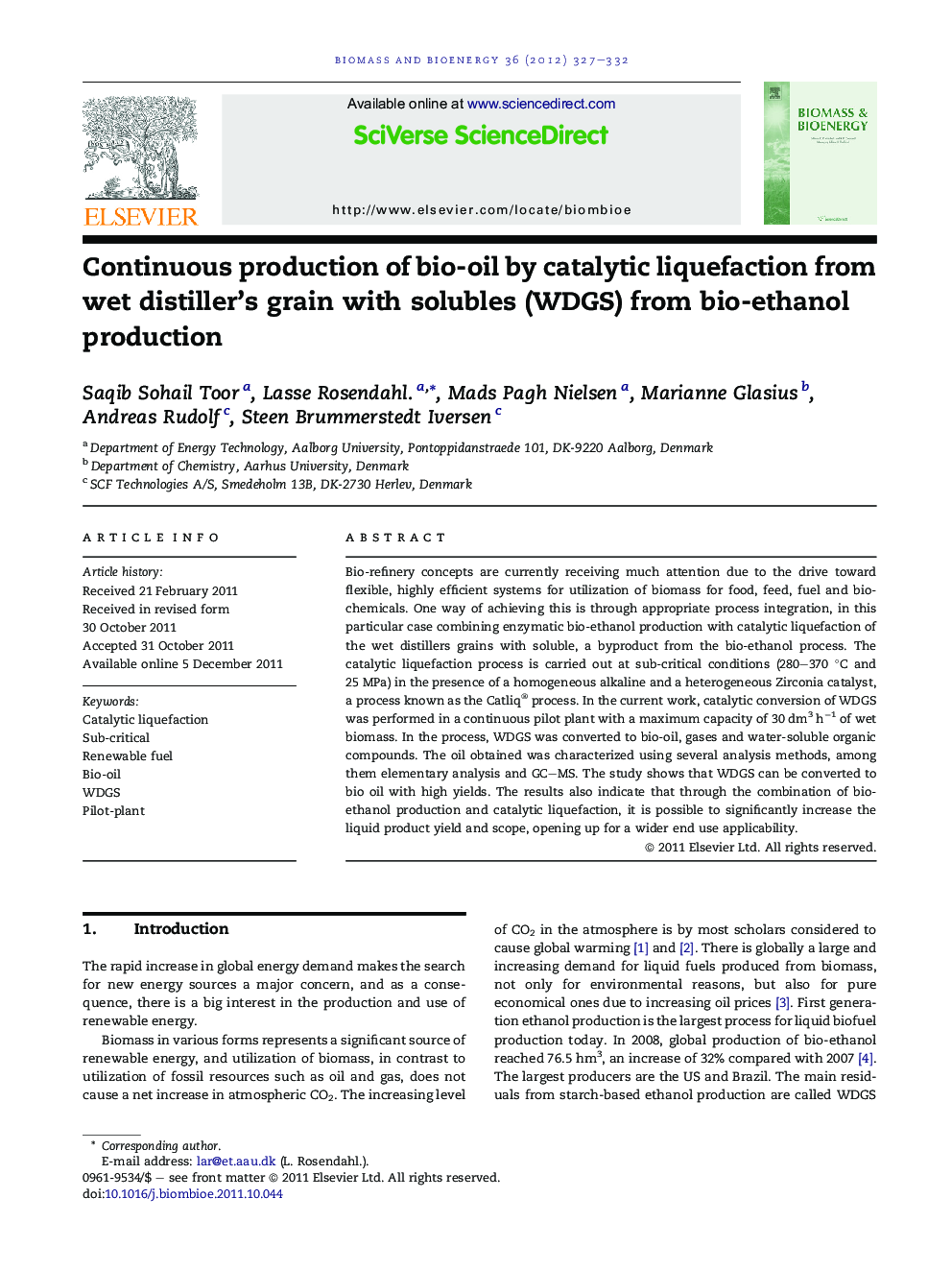| Article ID | Journal | Published Year | Pages | File Type |
|---|---|---|---|---|
| 677571 | Biomass and Bioenergy | 2012 | 6 Pages |
Bio-refinery concepts are currently receiving much attention due to the drive toward flexible, highly efficient systems for utilization of biomass for food, feed, fuel and bio-chemicals. One way of achieving this is through appropriate process integration, in this particular case combining enzymatic bio-ethanol production with catalytic liquefaction of the wet distillers grains with soluble, a byproduct from the bio-ethanol process. The catalytic liquefaction process is carried out at sub-critical conditions (280–370 °C and 25 MPa) in the presence of a homogeneous alkaline and a heterogeneous Zirconia catalyst, a process known as the Catliq® process. In the current work, catalytic conversion of WDGS was performed in a continuous pilot plant with a maximum capacity of 30 dm3 h−1 of wet biomass. In the process, WDGS was converted to bio-oil, gases and water-soluble organic compounds. The oil obtained was characterized using several analysis methods, among them elementary analysis and GC–MS. The study shows that WDGS can be converted to bio oil with high yields. The results also indicate that through the combination of bio-ethanol production and catalytic liquefaction, it is possible to significantly increase the liquid product yield and scope, opening up for a wider end use applicability.
► Hydrothermal liquefaction of wet biomass. ► Product phase analysis: oil, acqeous, gas and mineral phase. ► Energy and mass balance evaluation.
